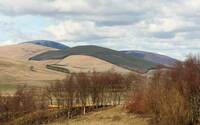- England
- Scotland
- France
- Holland
- Germany
- Italy
- Spain
- Portugal
- USA
- China
- Japan
- India
- Iran
- Advice
- Gardens
- England
- Scotland
- France
- Holland
- Germany
- Italy
- Spain
- Portugal
- USA
- China
- Japan
- India
- Iran
- Advice
- Garden Tours
Book: Landscape Planning and Environmental Impact Design: from EIA to EID
Chapter: Chapter 8 Forest design, forestry and sylviculture
In Britain there have been reafforestation programmes since the seventeenth century. Some have concentrated on wood production, others have embraced wider objectives. When the government launched its own programme in 1919, the objectives were very narrow. Public protest stirred almost at once and in the years since 1919 the Forestry Commission's horizons have been gradually prized open. But by 1995 the Commission was not halfï¾way to a full multiï¾objective policy. Between 1919 and 1970, it had learned ways of relating plantation forestry to the surrounding landscape. This helped Britain's forest industry to evade the fierce criticism which swept other countries in the 1970s. The internal management of Britain's forests remains blinkered and there is little functional integration with other land uses. America began the twentieth century with one third of its land area in public ownership and a dazzlingly enlightened policy for the management of its public forests. Our modern sense of the word 'conservation', to mean 'wise use', was first applied in connection with forestry. Gifford Pinchot, who set the American Forest Service policy, had a better understanding of sustainability than most modern commentators. But this enlightened regime, known as the 'Stetson Hat' period, came to an end after the Second World War. A 'Black Hat' period followed in which foresters became commodity-oriented tree farmers. The American public learned to equate foresters with 'wood butchers' (Spurr 1976: 41). In 1993, an old-style forester complained to the American Forestry Society that his daughter, with a degree in environmental science, could produce a better forest plan than most trained foresters. Environmental protests led to new legislation. America's Forest and Rangeland Renewable Resources Planning Act of 1974 and the National Forest Management Act of 1976 have made the industry take account of environmental concerns (Hewett & Hamilton 1982: 225). Other countries have faced similar problems. In 1980 an Australian forester lamented that 'in most parts of the world foresters are a beleaguered species. Practically everything we do is wrong' (Chervasse 1980). Australia's Softwood Forestry Agreement Act of 1978 led to new controls (Wright 1980). In Sweden 'recreational interests were taken into consideration in the Forest Act of 1976ï¾1977 despite strong opposition from groups connected with wood production (Hewett & Hamilton 1982: 77). In the 1990s the critics' fire is concentrated on the tropical rain forests.
